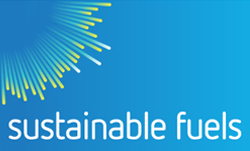REACH (Registration, Evaluation, Authorisation and restriction of Chemicals) is the European Community Regulation 1907/2006/EC on safe use of chemicals at all stages of the value chain. All companies must register the chemicals they produce in, or import into, the EU and submit a comprehensive set of relevant safety data.
The registration documents are checked by a central European authority ECHA (European Chemicals Agency). An information booklet “REACH in Brief” has been issued by the European Commission, ECHA for a better understanding of the legislation and its implementation.
For substances which are classified as dangerous, a risk assessment has to be prepared demonstrating the required risk management measures to be taken for their safe handling. For substances which are classified as dangerous, a risk assessment has to be prepared demonstrating the required risk management measures to be taken for their safe handling.
For all substances [produced or imported in Europe] classified as dangerous ECHA had to receive, before May 2018, a Chemical Safety Report (CSR) demonstrating the required risk management measures to be taken for their safe handling.
An important element of REACH is the communication of the dangerous properties and the necessary risk management measures along the supply chain that are detailed within the Material Safety Data Sheet (MSDS). For dangerous substances, the MSDS contains an Annex of detailed exposure scenarios for the recommended uses and describes the operational conditions for safe use. Therefore, the MSDS is a summary of the CSR. It is the responsibility of the registrant to ensure that there is sufficient communication with customers relating to the risk assessment.
For certain substances of very high concern e.g. carcinogenic, mutagenic or reprotoxic substances, an authorisation from ECHA is necessary for their use and placing on the market. This will be granted to the producing companies and importers only if it can be justified. It is the aim of REACH to replace very dangerous substances by less harmful ones.
Registration of fuel ethers under REACH
Fuel ethers (MTBE, ETBE and TAME) have been duly registered in REACH in 2010. The registration includes the required Chemical Safety Report. For further inquiries about the Fuel Ether REACH consortium (FERC),
The EU Risk Assessment for MTBE, demonstrates the safe use for production, formulation and use as an octane enhancer in petrol as well as use in the production of other chemicals with the corresponding recommended operational conditions. Fuel ethers are not identified as SVHCs (substances of very high concern). Furthermore, the documents demonstrate that an authorisation from ECHA is not necessary for these fuel ethers.
EU legislation on chemicals differentiates between existing and new substances. Existing substances are those listed in the European Inventory of Existing Commercial Chemical Substances (EINECS). This is a list of all chemicals produced or used in Europe prior to 18 September 1981. New chemicals are anything produced or used in Europe after that date.
As a new substance, TAEE is subject to a full risk assessment outside the REACH Risk Assessment process. Sustainable Fuels will be pleased to provide interested parties with details of who to contact for more information.
GPS Safety Summaries
The Global Product Strategy (GPS), an initiative developed by the International Council of Chemical Associations (ICCA) and launched in 2006, builds on the product stewardship elements of industry’s voluntary Responsible Care initiative. The GPS Safety Summaries provide easy-to-understand information on general risk characterization and risk management for chemicals in commerce and aim to improve the safe management of chemicals, harmonize approaches between developing, emerging and industrialized regions, and strengthen public confidence that our products are handled safely at all stages of the life cycle.
Sustainable Fuels companies have provided ICCA with GPS Safety summaries for ETBE, MTBE and TAME (GPS Chemical information is available on the ICCA website).
For European companies and associations, chemical management activities under GPS are driven by the REACH legislation and timelines that came into force in June 2007.
Endocrine Disruption
In May 2014, the French Agency for Food, Environmental and Occupational Health & Safety (ANSES), published a report evaluating the potential endocrine disrupting properties of five substances, including MTBE. This report consists of a literature review of existing studies, not taking into account the latest data submitted under the substance’s REACH registration, which underlines that previously reported effects of methyl tert-butyl ether (MTBE) are not relevant for humans. A recommendation of this report is to evaluate further the ED potential of MTBE by conducting studies according to OECD guidelines and best laboratory practices. For this reason, Sustainable Fuels considers that this report is incomplete and inconsistent with the EU Risk Assessment Report, and does not provide actual evidence that MTBE has endocrine-disrupting effects.
In 2014, a weight of evidence analysis (WoE) to determine the potential endocrine activity of methyl tert-butyl ether (MTBE) was published. This analysis, carried out by independent experts, was published in a peer reviewed scientific journal and firmly concludes that there is no evidence that MTBE has endocrine disruptor (ED) properties. Applying a process internationally agreed within the Organisation for Economic Co-operation and Development (OECD), the experts undertook the first systematic and transparent evaluation of an industrial chemical’s potential endocrine disrupting properties.


